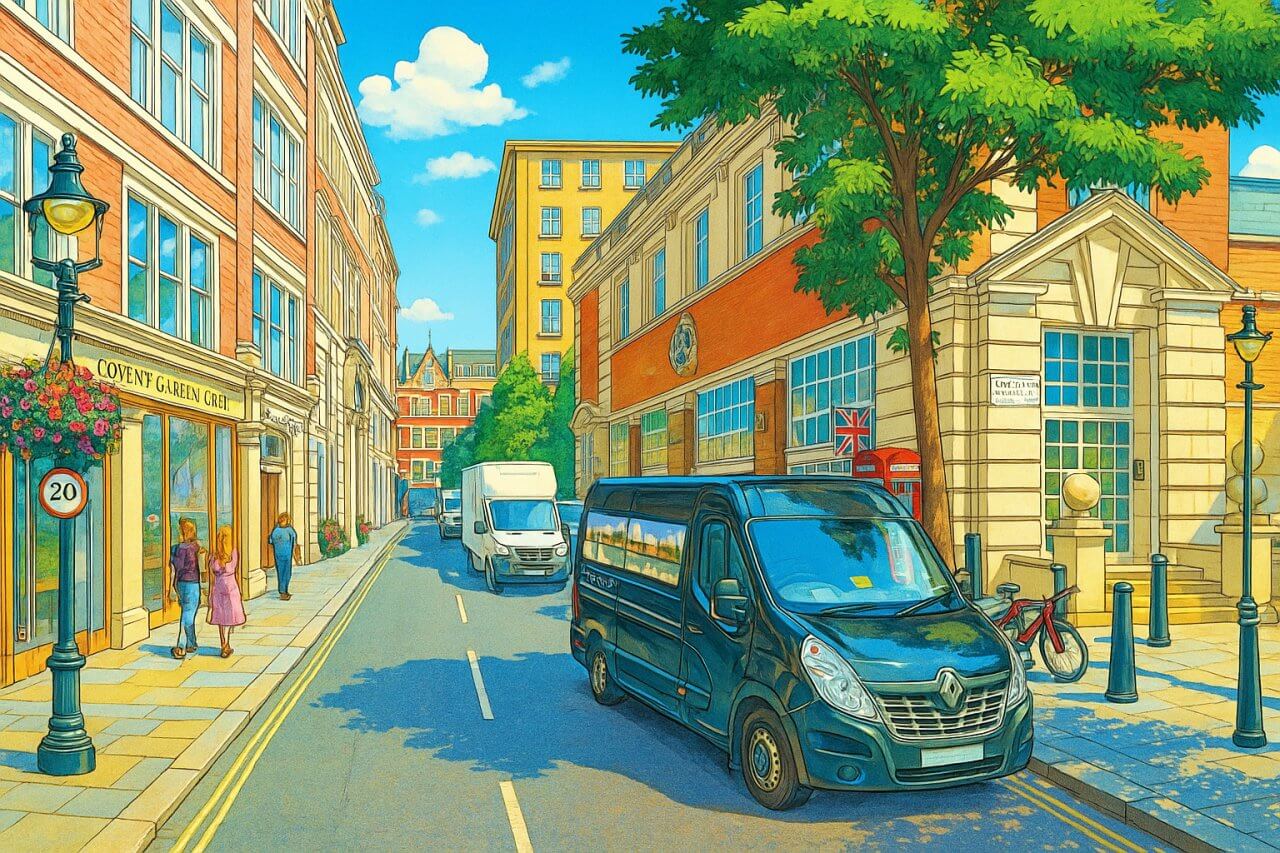
Tavistock Street, London
Tavistock Street is a short but historic street in the City of Westminster, right in the heart of London’s West End. It runs northeast from Southampton Street to Drury Lane, intersected by Wellington Street at two slightly disjointed junctions. Despite its modest length, Tavistock Street forms part of the vibrant Covent Garden area, brimming with historical character and cultural significance.
Street Layout and Surroundings
Tavistock Street is nestled between the bustling Strand and the iconic Covent Garden Piazza. It is composed of two segments, with a small jog where it meets Wellington Street. To the southwest, it links directly with Southampton Street, while the northeastern end terminates at Drury Lane. Nearby streets include Exeter Street, Russell Street, and Maiden Lane. This network of roads frames a lively urban pocket known for its theatres, galleries, and fine eateries.
The street has a gentle curve and is lined with a mix of architectural styles, from Georgian façades to modern offices and converted flats. It maintains a mostly pedestrian-friendly environment with limited vehicular access, contributing to the area’s calm, walkable charm.
History of Tavistock Street
Tavistock Street dates back to the early 17th century, with its development linked to the creation of Covent Garden as a fashionable residential district. The street’s name is derived from the Dukes of Bedford, who were instrumental in developing the area. The family held the title Marquess of Tavistock, which was used to name the street sometime in the 1600s.
Pronunciation: Tavistock is pronounced ‘TAV-iss-tok’, and in the International Phonetic Alphabet: /ˈtævɪstɒk/.
In the 18th and early 19th centuries, Tavistock Street was a fashionable shopping destination. It also had a reputation for being frequented by socialites and celebrities of the era. Today, remnants of its past as a stylish promenade can still be seen in its elegant architectural detailing and commercial façades.
Local Highlights and Cultural Attractions
Tavistock Street sits just steps away from the Covent Garden Station and its iconic market building. The area is famed for its theatres, and the street is within walking distance of:
- The Royal Opera House
- Theatre Royal Drury Lane
- London Transport Museum
- St Paul’s Church, known as the “Actors’ Church”
The street also hosts several independent shops, design studios, and small businesses, making it a favourite for those looking for unique finds away from more commercial high streets.
Property and Real Estate Information
As of mid-2025, residential property on or near Tavistock Street is in high demand due to its location and heritage appeal. Flats range in size from compact one-bedroom units (around 500 sq ft / 46 sq m) to spacious luxury apartments (1,200+ sq ft / 111+ sq m) in period buildings or modern conversions.
- Average sale price: £1.4 million for a two-bedroom flat
- Rental rate: £3,500–£5,500 per month depending on size and amenities
These figures are significantly higher than the London average, reflecting the street’s central location, cultural proximity, and architectural prestige.
Transport Links
Nearest London Underground Stations
- Covent Garden Station – served by the Piccadilly line
- Temple Station – served by the District and Circle lines
Both stations are within a 5 to 10-minute walk, making Tavistock Street easily accessible by London Underground.
Nearby Bus Stops
The nearest bus stops are found on the Strand, just a short walk from either end of Tavistock Street. These serve a variety of central routes including:
- Routes 6, 11, 15, 23, 87, and 139
These bus services provide convenient links to other parts of Westminster, the West End, the City, and beyond.
Fun Fact
In the 19th century, Tavistock Street was sometimes nicknamed "Rival to Bond Street" because of its fashionable boutiques and high society footfall. The street's association with celebrity culture continued well into the Victorian era, and its proximity to the theatres cemented its role in the social circuit of London’s elite.
Quick Facts
- Location: City of Westminster, London
- Connects: Southampton Street to Drury Lane
- Nearby Streets: Wellington Street, Exeter Street, Russell Street
- Origin of Name: Named after the Marquess of Tavistock, title of the Duke of Bedford family
- Pronunciation: ‘TAV-iss-tok’ /ˈtævɪstɒk/
- Main Sights Nearby: Royal Opera House, Theatre Royal Drury Lane, Covent Garden Market
- Transport: Covent Garden Station (Piccadilly), Temple Station (District, Circle)
- Bus Routes: 6, 11, 15, 23, 87, 139
- Property Prices (2025): Avg. £1.4M for 2-bed flats; rent £3,500–£5,500/month
- Fun Fact: Once considered a fashionable shopping street rivaling Bond Street
Map of Tavistock Street, London
 Painting of Tavistock Street, London
Painting of Tavistock Street, London